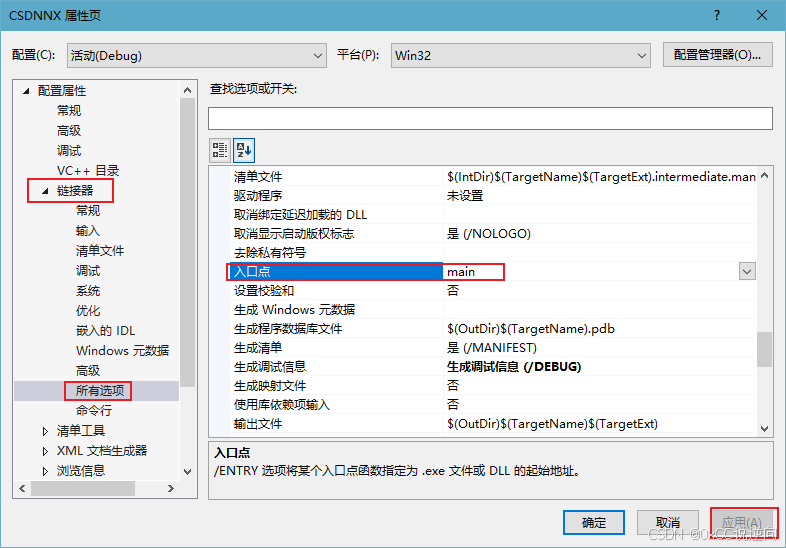文章目录
- part01 用栈实现队列
- part02 用队列实现栈
- part03 有效的括号
- part04 删除字符串中的所有相邻重复项
- 归纳
- 栈
- 队列
跟着代码随想录刷题的第九天。
代码随想录链接:代码随想录
part01 用栈实现队列
题目链接:232.用栈实现队列
代码:
java">class MyQueue {Stack<Integer> sIn = new Stack<>();Stack<Integer> sOut = new Stack<>();public MyQueue() {}public void push(int x) {sIn.push(x);}public int pop() {if(sOut.empty()){while(!sIn.empty()){sOut.push(sIn.pop());}}int result = sOut.pop();return result;}public int peek() {if(sOut.empty()){while(!sIn.empty()){sOut.push(sIn.pop());}}int result = sOut.peek();return result;}public boolean empty() {if(sIn.empty()&&sOut.empty())return true;return false;}
}
题解:本题的关键在于队列是先进先出,栈是先进后出,要用栈来实现队列的功能就需要用两个栈,一个正常存入数据,另一个存入第一个栈出来的数据,这样就能实现队列的功能。值得注意的是,只有当第二个数组为空时,第一个数组的数值再存入到第二个数组当中
part02 用队列实现栈
题目链接:225. 用队列实现栈
代码:
java">class MyStack {Queue<Integer> q1 = new LinkedList<>();Queue<Integer> q2 = new LinkedList<>();public MyStack() {}public void push(int x) {q2.add(x);while(!q1.isEmpty()){q2.add(q1.poll());}Queue<Integer> tmpq = q1;q1 = q2;q2 = tmpq;}public int pop() {return q1.poll();}public int top() {return q1.peek();}public boolean empty() {return q1.isEmpty();}
}
题解:队列实现栈有一个问题,在于把第一个队列的数值输出到另个队列之后,结果还是先进先出,没有任何改变。所以本题就把push进来的值放到队列2中,再把队列1中的值放到队列2中,这样就实现了后进先出
part03 有效的括号
题目链接:20. 有效的括号
代码:
java">class Solution {public boolean isValid(String s) {Stack<Character> stack = new Stack<>();for(int i = 0;i<s.length();i++){if(s.charAt(i)==')'||s.charAt(i)=='}'||s.charAt(i)==']'){ if(stack.empty())return false;if(stack.peek()==makenew(s.charAt(i))){stack.pop();continue;}return false;}stack.push(s.charAt(i));}if(stack.empty())return true;elsereturn false;}public char makenew(char a){char b= ' ';switch(a){case ')':b = '(';break;case'}':b = '{';break;case']':b = '[';}return b;}}
题解:本题采用的是栈来实现。由于所有的括号都是一一对应的输入,所以,当遇到右括号的时候,比较栈顶元素是不是左括号,如果是的话,就弹出,否则就返回false。
part04 删除字符串中的所有相邻重复项
题目链接:1047. 删除字符串中的所有相邻重复项
代码:
java">class Solution {public String removeDuplicates(String s) {Stack<Character> stack = new Stack<>();for(int i = 0;i<s.length();i++){if(!stack.empty()&&s.charAt(i)==stack.peek()){stack.pop();continue;}stack.push(s.charAt(i));}StringBuilder a = new StringBuilder();while(!stack.empty())a.append(stack.pop());a.reverse();return new String(a);}
}
题解:本题和上题解题思路基本一致,用栈来求解。当遇到和当前字符相同的,就出栈,反之就进栈,继续比较。
归纳
栈
参考来源:https://blog.csdn.net/2201_75437633/article/details/135733411
定义栈的方法
1、数组
java">public class ArrayStack {private int[] stack;private int top;public ArrayStack(int capacity) {stack = new int[capacity];top = -1;}public void push(int item) {if (top == stack.length - 1) {throw new IllegalStateException("Stack is full");}stack[++top] = item;}public int pop() {if (isEmpty()) {throw new IllegalStateException("Stack is empty");}return stack[top--];}public int peek() {if (isEmpty()) {throw new IllegalStateException("Stack is empty");}return stack[top];}public boolean isEmpty() {return top == -1;}
}
2、链表
java">public class LinkedListStack {private Node top;private class Node {int data;Node next;public Node(int data) {this.data = data;this.next = null;}}public LinkedListStack() {top = null;}public void push(int item) {Node newNode = new Node(item);if (isEmpty()) {top = newNode;} else {newNode.next = top;top = newNode;}}public int pop() {if (isEmpty()) {throw new IllegalStateException("Stack is empty");}int item = top.data;top = top.next;return item;}public int peek() {if (isEmpty()) {throw new IllegalStateException("Stack is empty");}return top.data;}public boolean isEmpty() {return top == null;}
}
3、栈,可以直接调用下面的函数
java">Stack<Object> stack = new Stack<>();
栈常用的函数:
入栈:push()
出栈:pop()//会返回栈顶元素
获取栈顶元素:peek()
判断栈是否为空:empty()
查找元素在栈中的位置,由栈底到栈顶:serch(Object o)
对当前栈进行清空:clear()
队列
参考来源:https://blog.csdn.net/2201_75437633/article/details/135823215
定义队列的三种方法
- LinkedList是Java中常用的双向链表实现,它同时实现了List接口和Queue接口,因此可以被用作队列来进行元素的添加和移除操作。
- Queue queue = new LinkedList<>();
- ArrayDeque是一种基于数组的双端队列实现,它同样实现了Queue接口,并且在尾部添加和移除元素的操作具有较低的时间复杂度。
- Queue queue = new ArrayDeque<>();
- PriorityQueue是一个基于优先级堆的无界优先级队列实现,它可以确保每次出队的元素都是队列中优先级最高的元素。
- Queue queue = new PriorityQueue<>();
优先级队列的例子:
java">Queue<Integer> queue = new PriorityQueue<>();
queue.offer(5); // 入队
queue.offer(3);
int element = queue.poll(); // 出队
System.out.println(element); // 输出:3
队列常用的函数:
入队列:add()或者offer()
出队列:remove()或者poll()//结果返回栈顶元素
获取队列头部的元素:element() 和 peek()
检查队列是否为空:isEmpty()
清空队列中的所有元素:clear()





